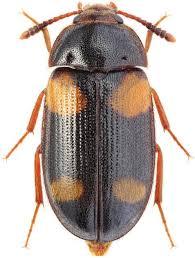Background

Oak woodland habitats provide microhabitats to thousands of insect species living and dependent on old hollow oaks. In Sweden the number of species associated with oak trees is estimated to be more than 880 species, and an example of one of the most species rich group are called saproxylic insects. Saproxylic species are defined as those that depend on, during some part of their life cycle, upon the dead or dying wood of moribund or dead trees (standing or fallen), upon wood-inhabiting fungi, or upon the presence of other saproxylic species. Saproxylic beetles are considered among the organism groups with the highest number of classified species association with host trees. Unfortunately, oak trees have over the years been subjected to exploitation and destruction, as a result leaving only a few regions in Europe with old trees and has also led to increased distances between patches of oak woodland habitats. For saproxylic beetles that are specialised and dependent on oak trees, any drastic loss of host oak trees implies that the species that depend on them are also likely to decline and subsequently become extinct.
The present study compares results from a study conducted in 1994 by Ranius and Jansson (2000) with present species communities. In their study, they investigated how original canopy cover, tree size and forest regrowth affected the frequency of occurrence of saproxylic beetles in old hollow oaks. Results of the study revealed that the species number was high in open plots and lower in regrowth areas, and some saproxylic beetles were harmed by forest regrowth and preferred trees with larger trunks
Aim of study
This explorative study focuses on checking if diversity patterns are stable over the years. We revisited oaks that have, on average, been managed similarly. So, by revisiting a saproxylic hotspot, we would therefore expect similar patterns in species composition between the two years mainly determined by local conditions, assuming the local conditions have remained the same.
Justification:
The findings of the study are important for successful planning of conservation of saproxylic beetle fauna on both a habitat and landscape level.
Responsible for this page:
Director of undergraduate studies Biology
Last updated:
09/01/19
